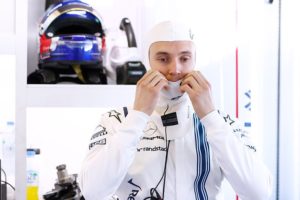
As a new season of Formula 1 approaches the period just before testing commences is the most optimistic time of the year. Right now all new cars are aerodynamically flawless, more powerful than anything that’s ever been built, and lighter than a feather. But all too soon a modest stopwatch will humble them.
The first team to launch their 2018 car was the Haas F1 team. The American team chose to forego a typical launch and opted instead for to release a handful of images online. The release of digital images was no doubt a ploy be Haas to keep their competitors, quite literally, in the dark as to the nitty-gritty of their 2018 design.
Nevertheless, what was obvious from the images is that Haas has adopted a strikingly similar side-pod design to what Ferrari pioneered in 2017 and a considerably more intricate front-wing. Additionally, this early version of the Haas is sporting a scaled down version of 2017’s sharkfin and a significant focus on a predominantly white livery. As the technical regulations have remained largely stable and unchanged the changes from 2017 to 2018 cars won’t be as visually obvious. The most noticeable difference is the inclusion of the Halo head protection system. While it is certainly a big adjustment and change to the aesthetic of the car chances are it probably wont take as long as some might think to get used to.
 Williams was the second team to introduce its car with a traditional online launch. Chief technical officer Paddy Lowe and head of aerodynamics Dirk de Beer have designed the FW41. Lowe said the car “has many new features, most of which are not all that obvious, but externally the team has pursued a very different aerodynamic concept which has allowed us some significant progress in aerodynamic performance.”
Williams was the second team to introduce its car with a traditional online launch. Chief technical officer Paddy Lowe and head of aerodynamics Dirk de Beer have designed the FW41. Lowe said the car “has many new features, most of which are not all that obvious, but externally the team has pursued a very different aerodynamic concept which has allowed us some significant progress in aerodynamic performance.”
“All Formula One cars are an evolution of what has gone before to some extent, but the FW41 does involve a number of departures from the directions that have been pursued in the past. Overall, the philosophy we are starting to see emerge is a new approach to the collaboration between aerodynamics and design to achieve the optimum working result.”
While only lap times will tell if Williams have built a quick racecar the 2018 challenger undoubtedly looks more aggressive than its predecessor. In addition, the car has been designed with a longer wheelbase, which suggests that Williams have foregone the low-drag design philosophy of the last few years.
Similar to Haas the Williams also sports the Ferrari-style side pods, which you’re likely to see on more of the mid-field cars this season. Naturally, and so as to avoid giving away any design secrets, some areas of the car has been shrouded in black paint.
 Beyond the car that has been designed by Williams this season the other big unknown for the team is its driver line up. Nonetheless, de facto team principal Claire Williams has described the driver pairing for Sergey Sirotkin and Lance Stroll as “exciting” while highlighting Sirotkin’s impressive work with the technical team. Paddy Lowe echoed this sentiment by saying that the choice to sign Sirotkin was based purely on his ability.
Beyond the car that has been designed by Williams this season the other big unknown for the team is its driver line up. Nonetheless, de facto team principal Claire Williams has described the driver pairing for Sergey Sirotkin and Lance Stroll as “exciting” while highlighting Sirotkin’s impressive work with the technical team. Paddy Lowe echoed this sentiment by saying that the choice to sign Sirotkin was based purely on his ability.
The Sauber and Renault teams are the next to launch their respective cars on the 20th of February followed by Ferrari and Mercedes on the 22nd, McLaren on the 23rd, and Toro Rosso on the first day of testing, the 26th of February.


